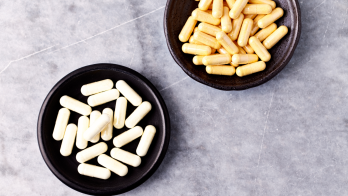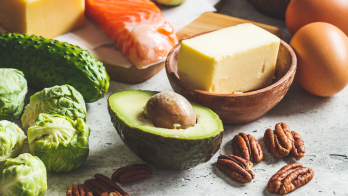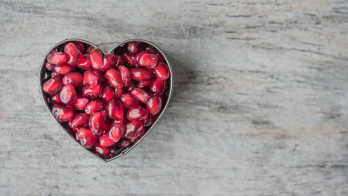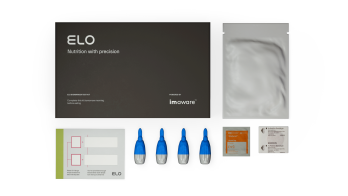How to increase your HDL without medication
Elevated HDL cholesterol levels are associated with improved cardiovascular health and reduced risk of atherosclerosis, stroke, and heart attack. Medications are one way to boost HDL cholesterol levels, however, diet and lifestyle modifications can have a big impact as well. Here are the best science-backed strategies to increase your HDL cholesterol without medication.

Whether it’s physical activity, diet, or genetics, there are multiple factors that can contribute to low HDL levels. While medication can boost these numbers, making improvements to your diet and lifestyle habits can also be effective. But what changes are necessary, and how long will it take to see a difference? Let’s start by examining what HDL cholesterol is and how to interpret your results.
What is HDL?
HDL stands for High-Density Lipoprotein and is often known as “good” cholesterol. HDL cholesterol works to promote heart health by removing LDL “bad” cholesterol from your bloodstream and recycling it back to the liver in a process called reverse cholesterol transport [1]. Once LDL is in the liver, it can be excreted. If LDL is not excreted from the body, it can build up in your blood vessels and contribute to blood clots and plaques.
As such, higher HDL levels are considered cardioprotective in most cases.
To learn more about how to lower LDL cholesterol without medication, check out this article here.
Interpreting HDL results
When cholesterol levels are checked, you will likely receive measurements in mg of cholesterol/dL of blood. For both men and women, HDL of 60 mg/dL or above is desirable, 40-60 mg/dL is low, and less than 40 mg/dL is considered at risk [3].
What factors influence HDL levels?
While you aren’t able to change your genetics, you can improve HDL levels through various diet and lifestyle modifications. Here are some factors that can contribute to low HDL levels:
Genetics: Since genes play a vital role in determining HDL and other cholesterol levels, a family history of low HDL puts you at greater risk.
Sex: Men are more likely than women to have low HDL levels [4].
Age: The risk for low HDL levels increases as you age [4].
Diet: Consuming high amounts of saturated and trans fats and low amounts of unsaturated fats increases your risk of low HDL [2].
Smoking: Cigarette and tobacco use are highly correlated with poor cardiovascular health, including low levels of HDL [5].
Alcohol: Moderate alcohol consumption (about 1 drink per day) is associated with positive effects on heart health, but excessive alcohol intake and alcoholism can lower HDL levels [5].
Weight: Being overweight or obese can increase your risk of cardiovascular disease and lower your levels of HDL [3,4].
Physical activity: A sedentary lifestyle with little exercise is one of the biggest risk factors for low HDL [6].
Medication: Certain medications (such as beta blockers), anabolic steroids (such as testosterone), progestins (often found in birth control), and benzodiazepines can all contribute to low levels of HDL cholesterol [2].
How to increase HDL without medication
Diet and lifestyle can have a significant impact on HDL levels. Here are some science-backed methods to improve HDL cholesterol without medication.
Lower saturated fat.
Consuming less saturated fats and more monounsaturated fatty acids (MUFAs) have been shown to raise HDL cholesterol levels, as well as lower LDL and triglyceride levels [2,3,7]. Animal products (such as high-fat meat and dairy) are high in saturated fats and should be limited to 10% of your total energy intake per day. Instead, trade saturated fats for MUFAs, which are found in foods such as olive oil, canola oil, nuts, and avocado. MUFAs have a positive impact on cholesterol levels, and small changes (such as swapping butter for olive oil) can help increase HDL.
Avoid trans fats.
Trans fats have been shown to elevate LDL cholesterol and increase risk for cardiovascular disease, and therefore, should be avoided [7]. In addition, trans fats appear to increase inflammation, an underlying risk factor for many chronic conditions.
Trans fats are often found in fried foods and processed baked goods such as cakes, crackers, cookies, and margarines, and are listed as “partially hydrogenated oils” in ingredient lists [7]. Many countries have banned partially hydrogenated oils altogether because of their damaging impact on heart health.
Increase physical activity.
Regular exercise is one of the most effective ways to raise HDL cholesterol levels [2,3,6]. Physical activity is also linked to improved body composition, which is positively correlated with heart health and HDL. The American Heart Association and American College of Sports Medicine recommend adults get a minimum of 30 minutes of moderate aerobic activity/day for 5 times/week, or 20 minutes of vigorous activity for 3 times/week. Additionally, both organizations recommend muscle-strengthening and endurance-building activities 2 days/week [8].
Stop smoking.
Research shows that smoking cessation is linked with elevated HDL cholesterol levels [2,3,5]. Cigarette use, as well as second-hand smoke, are factors that greatly increase your risk of low HDL and poor cardiovascular health, so, if necessary, seek support to quit.
Add more fiber.
Studies reveal that high-dose supplemental dietary fiber intake (more than 30 g/day) is associated with elevated HDL, suggesting its potential beneficial effect on decreased cardiovascular risk [9].
How long does it take to increase HDL?
The amount of time it takes to see improvements in HDL levels varies greatly from person to person and the interventions employed. However, making significant diet and lifestyle changes can speed up the process and reduce your need for medication.
Summary
HDL (aka “good” cholesterol) promotes heart health by reducing LDL (“bad”) cholesterol levels, and can decrease your risk for heart disease, heart attack, and stroke. Diet and lifestyle tactics such as reducing your intake of saturated and trans fats, increasing activity levels, and managing your weight, can improve HDL levels and boost heart health without the use of medication.
Disclaimer: The text, images, videos, and other media on this page are provided for informational purposes only and are not intended to treat, diagnose, or replace personalized medical care.
Key Takeaways
HDL cholesterol works to promote heart health by removing LDL (“bad”) cholesterol from your bloodstream and recycling it back to the liver in a process called reverse cholesterol transport [1].
For both men and women, HDL of 60 mg/dL or above is desirable, 40-60 mg/dL is low, and less than 40 mg/dL is considered at risk [3].
Diet and lifestyle tactics can improve HDL levels and boost heart health.
References
Tosheska Trajkovska, K., & Topuzovska, S. (2017). High-density lipoprotein metabolism and reverse cholesterol transport: strategies for raising HDL cholesterol. Anatolian journal of cardiology, 18(2), 149–154. https://doi.org/10.14744/AnatolJCardiol.2017.7608
U.S. National Library of Medicine. (2019, April 18). HDL: The "Good" Cholesterol. MedlinePlus. https://medlineplus.gov/hdlthegoodcholesterol.html.
Mayo Foundation for Medical Education and Research. (2020, November 10). HDL cholesterol: How to boost your 'good' cholesterol. Mayo Clinic. https://www.mayoclinic.org/diseases-conditions/high-blood-cholesterol/in-depth/hdl-cholesterol/art-20046388.
Jousilahti, P., Vartiainen, E., Tuomilehto, J., & Puska, P. (1999). Sex, Age, Cardiovascular Risk Factors, and Coronary Heart Disease. Circulation, 99(9), 1165–1172. https://doi.org/10.1161/01.cir.99.9.1165
Rosoff, D. B., Davey Smith, G., Mehta, N., Clarke, T. K., & Lohoff, F. W. (2020). Evaluating the relationship between alcohol consumption, tobacco use, and cardiovascular disease: A multivariable Mendelian randomization study. PLoS medicine, 17(12), e1003410. https://doi.org/10.1371/journal.pmed.1003410
Ruiz-Ramie, J. J., Barber, J. L., & Sarzynski, M. A. (2019). Effects of exercise on HDL functionality. Current opinion in lipidology, 30(1), 16–23. https://doi.org/10.1097/MOL.0000000000000568
Katcher, H. I., Hill, A. M., Lanford, J. L. G., Yoo, J. S., & Kris-Etherton, P. M. (2009). Lifestyle Approaches and Dietary Strategies to Lower LDL-Cholesterol and Triglycerides and Raise HDL-Cholesterol. Endocrinology and Metabolism Clinics of North America, 38(1), 45–78. https://doi.org/10.1016/j.ecl.2008.11.010
Haskell, W. L., Lee, I-M., Pate, R. R., Powell, K. E., Blair, S. N., Franklin, B. A., ... Bauman, A. (2007). Physical activity and public health: Updated recommendation for adults from the American College of Sports Medicine and the American Heart Association. Circulation, 116(9), 1081-1093.
Zhou, Q., Wu, J., Tang, J., Wang, J. J., Lu, C. H., & Wang, P. X. (2015). Beneficial Effect of Higher Dietary Fiber Intake on Plasma HDL-C and TC/HDL-C Ratio among Chinese Rural-to-Urban Migrant Workers. International journal of environmental research and public health, 12(5), 4726–4738. https://doi.org/10.3390/ijerph120504726






